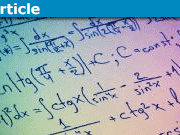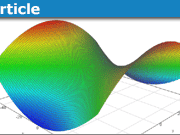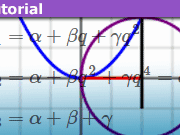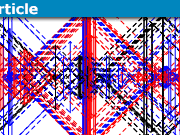Some Misconceptions on Indefinite Integrals
Integration is an incredibly useful technique taught in all calculus classes. Nevertheless, there are certain paradoxes involved with integration that are not easily solved. At least, I asked in my topology class whether anybody could resolve the paradox, and nobody found the correct answer.
The first paradox arises in the following integral:
[tex]\int \frac{1}{x} dx = \log |x|+C[/tex]
This is taught in any calculus class, but it is actually wrong. Indeed, how is this usually interpreted? It is interpreted as all the functions ##f(x)## whose derivative is ##1/x## is of the form ##\log|x|## plus some constant. That this interpretation is false can be seen by simply noting that the following function is not of that form but the derivative is ##1/x## nevertheless:
[tex]f(x) = \left\{\begin{array}{ll} \log x & \text{if}~x>0\\ 1+\log(-x) & \text{if}~x<0\end{array}\right.[/tex]
In fact, all the functions whose derivative is ##1/x## have the form
[tex]f(x) = \left\{\begin{array}{ll} \log(x) + C & \text{if}~x>0\\ \log(-x) +C’& \text{if}~x<0\end{array}\right.[/tex]
So there are two arbitrary constants involved, not one!
What goes wrong here? Well, everything relies on the theorem ##f’=g’## implies ##f=g+C##. This follows easily from the mean-value theorem. But the mean-value theorem is proven for functions ##f:[a,b]\rightarrow \mathbb{R}## which are continuous on ##[a,b]## and differentiable on ##(a,b)##. In our example with ##1/x##, the domain is ##\mathbb{R}\setminus\{0\}##, which is not an interval and cannot be written as an interval. So the traditional formula
[tex]\int f'(x)dx = f(x)+C[/tex]
is only valid if the domain is an interval. Otherwise, the structure of the integral is harder.
The second paradox involves an integration by parts. We have
[tex]\int \frac{1}{x} dx = 1 + \int \frac{1}{x} dx[/tex]
Cancelling both sides yields ##1=0##. What is going on?
Now we need to go back to the very definition of an indefinite integral. An indefinite integral is not just one function, it is a set of functions. Thus
[tex]\int f(x)dx = \{F~\vert~F’ = f\}[/tex]
What about our ##f(x)+C## notation then? That must be seen as an equivalence class. So we define on the set of functions the following: ##f\sim g## iff ##f’ = g’##. Then we can write the equivalence classes ##[f] = \{g~\vert~f\sim g\}##. It is now exactly the point that an indefinite integral is such an equivalence class, but we write this equivalence class (wrongly) as ##[f] = f+C##.
The operations on the equivalence classes are easy and natural:
- ##[f]+[g] = [f+g]##
- ##\alpha [f] = [\alpha f]##
- ##[\alpha] = [0]##
- ##0[f] = [0]##
with ##\alpha\in \mathbb{R}##
In our (wrong notation), things are a bit more awkward:
- ##(f+C) + (g+C) = (f+g)+C##
- ##\alpha (f+C) = (\alpha f) + C##
- ##\alpha + C = C##
- ##0(f+C) = C##
These look very weird, but solves our problem. Indeed, we know that
[tex]\int \frac{1}{x}dx = \log|x| + C = [\log|x|][/tex]
So we get that
[tex][\log|x|] = [1 + \log|x|] = [1]+[\log|x|][/tex]
So first integration by parts in our paradox is true, but only if we interpret integration by parts as
[tex]\int fg’ = [fg] + \int f’ g[/tex]
So ##fg## is an equivalence class and not a function.
Now it follows that
[tex][\log|x|] – [\log|x|]= [1]+[\log|x|] – [\log|x|][/tex]
which is also true, and from which follows
[tex][0] = [1][/tex]
which is true! But from this does not follow that ##0=1##.
Here is another example:
[tex]0 = 0\int xdx = \int 0x dx = \int 0 dx = C[/tex]
See if you can resolve this paradox using the equivalence class formalism.
See my next article: https://www.physicsforums.com/insights/friends-strangers-7825-computers/
Advanced education and experience with mathematics








Leave a Reply
Want to join the discussion?Feel free to contribute!